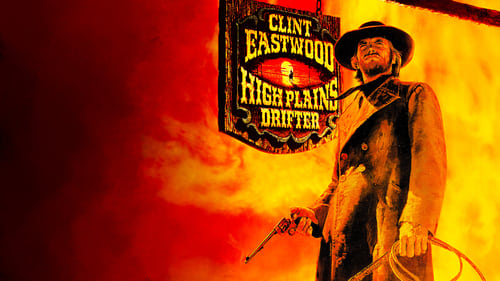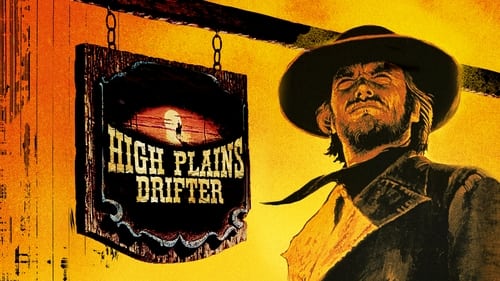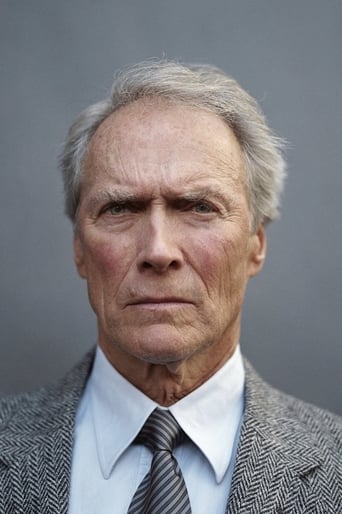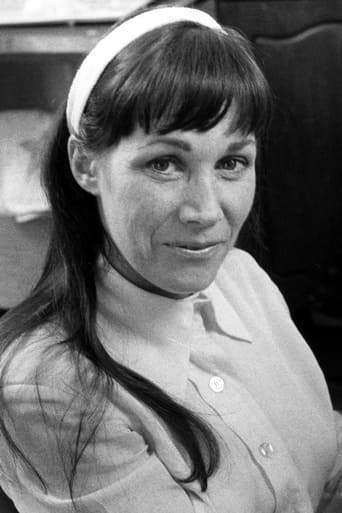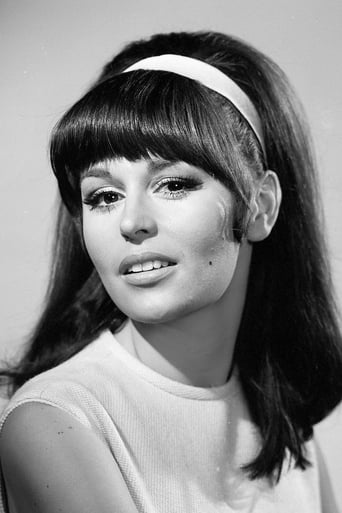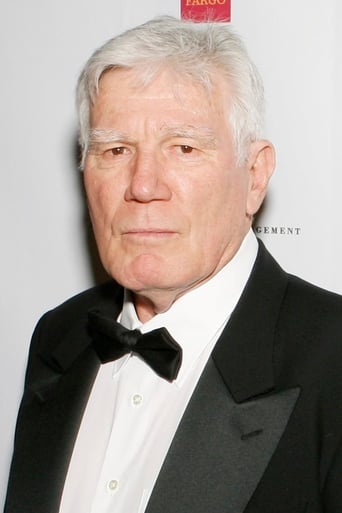Harockerce
What a beautiful movie!
Lovesusti
The Worst Film Ever
Plustown
A lot of perfectly good film show their cards early, establish a unique premise and let the audience explore a topic at a leisurely pace, without much in terms of surprise. this film is not one of those films.
Hadrina
The movie's neither hopeful in contrived ways, nor hopeless in different contrived ways. Somehow it manages to be wonderful
sawman-24193
The first time I saw High Plains Drifter was probably in the late 1970s. Clint Eastwood stars in and directs the film. Most westerns are either about cattle drives or cowboys and Indians. High Plains Drifter is different: this is a God's-Judgment-on-the-wicked western.Clint Eastwood plays a stranger who rides into the town of Lago--and he has a really bad attitude. This stranger is also very good with a side arm. During the course of the film, the stranger ends up killing some bad guys and burning the town of Lago to the ground. There are a couple of flashbacks of one Marshall Jim Duncan being whipped to death. At the end of the film, the audience can see that the stranger was the Second Coming of Marshall Duncan:The stranger rides out of the town of Lago past the cemetery. This little guy named Mordecai is writing something on a grave marker. The stranger looks at Mordecai and Mordecai looks up and says, "I'm almost done here."Then Mordecai asks the stranger, "I never did know your name."And the stranger replies, "Yes, you do."As the stranger rides off, the camera shows the grave marker: "Marshall Jim Duncan."I have a short story entitled "High Plains Drifter" (Ethos, March & May 1995); I have a book entitled High Plains Drifter: A Hitchhiking Journey Across America (PublishAmerica, December 2008); I have a blog called "High Plains Drifter." So is this some sort of gunslinger fixation or is there method to my madness? The clue is in one Scripture: "In the mouth of two or three witnesses let every word be established."There is a lot of sin (unrepented sin) in the United States and in the world. When people continue to live in sin, eventually God's Judgment falls. The more people try to hide their sin, the greater God's Judgment. The people of Lago tried to hide the murder of Marshall Duncan, but their sin was found out. You can't hide from God.There is a scene in High Plains Drifter where this lady tells the stranger, "Ever since Marshall Duncan's death, the people in this town are afraid of strangers."
_____"When the Stranger says: 'What is the meaning of this city?
Do you huddle close together because you love each other?'
What will you answer? 'We all dwell together
To make money from each other'? or 'This is a community'?"Oh my soul, be prepared for the coming of the Stranger.
Be prepared for him who knows how to ask questions."There is one who remembers the way to your door:
Life you may evade, but Death you shall not.
You shall not deny the Stranger."--T.S. Eliot
Choruses from "The Rock"_____There is another scene in High Plains Drifter where the people of Lago (the town of Lago reminds me of Algona, Iowa) are meeting at the church. One of the guys is speaking in the front of the church. The camera then pans to the right and shows a bulletin board with this Scripture:Isaiah 53: 3-4: "Surely he hath borne our griefs, and carried our sorrows: yet we did esteem him stricken, smitten of God, and afflicted. But he was wounded for our transgressions, he was bruised for our iniquities: the chastisement of our peace was upon him; and with his stripes we are healed." Marshall Jim Duncan was whipped to death; Jesus Christ was at least nine-tenths whipped to death. The stranger riding into Lago (the first scene of the film) is a symbol of the Second Coming of Jesus Christ: not as the Lamb of God, but as the Lion of the Tribe of Judah.Isaiah 63: 1-6: "Who is this that cometh from Edom, with dyed garments from Bozrah? this that is glorious in his apparel, travelling in the greatness of his strength? I that speak in righteousness, mighty to save. Wherefore art thou red in thine apparel, and thy garments like him that treadeth in the winefat? I have trodden the winepress alone; and of the people there was none with me: for I will tread them in mine anger, and trample them in my fury; and their blood shall be sprinkled upon my garments, and I will stain all my raiment. For the day of vengeance is in mine heart, and the year of my redeemed is come. And I looked, and there was none to help; and I wondered that there was none to uphold: therefore mine own arm brought salvation unto me; and my fury, it upheld me. And I will tread down the people in mine anger, and make them drunk in my fury, and I will bring down their strength to the earth."
Lee Eisenberg
After a few years on "Rawhide", Clint Eastwood got internationally famous with Sergio Leone's spaghetti westerns. I understand that a couple of movies in the US tried to unsuccessfully impersonate the spaghetti westerns. It was understandable that Clint, having made his directorial debut with "Play Misty for Me", would decide to direct his own western. The result was "High Plains Drifter".The movie itself is middling. Clint's nameless character (The Man with No Name yet again) is sort of a cross between an angel and a devil, doling out justice in a corrupt town. However, much of the movie comes across as silly, although that might have been the intention. Nevertheless, the westerns from this era that I recommend are Arthur Penn's "Little Big Man" and Robert Altman's "McCabe and Mrs. Miller".The rest of the cast includes Verna Bloom (Mrs. Wormer in "Animal House") and Billy Curtis (one of the munchkins in "The Wizard of Oz").
nbthalia
The most controversial scene in this movie concerns the taking by Clint Eastwood of a "lady" and now referred to by many posters as a rape. These people should first of all consider the context, i.e. the "wild west" in the 19th century. This was not an epoch or location noted for gentility and good manners. Indeed, such attributes would have been ridiculed in a rough mining town such as this. Anyone being raised here would be influenced from a young age by ongoing situations and the general mores of the town. Let's not mince words here, this girl was a slut. Her initial approach to Clint was notable for its lack of finesse, but this girl knew no other way to approach a man. She had learnt from observation that this was the way to achieve her ends. This same approach, in a more modified form can even be seen today in some quarters. Rape? I don't think so. Her dubious character was accurately drawn. There is a strong and ironic comedic overtone to this movie and is very welcome considering some of the violence depicted. Never have so many craven cowards been assembled in one place. Of course, the movie is dated, but now takes its place as a classic of the genre. A great watch if you are in the mood for a simple plot which is brimming over with malice and satisfying revenge themes. Thank goodness Clint didn't ride off into the sunset followed by the departing unsatisfied wife who had simultaneously loaded up her buggy as Clint left town. That would have been unforgivably corny. On another note I thought the buildings in the outdoor set were unconvincing in some respects. The timber was too smooth and modern looking. Also the windows were obviously plate glass (not invented) and too sparklingly. clean considering the dusty street. And modern building materials could be seen, especially round the backs of the set.
wintry-34293
Following the success of Sergio Leone's masterful 'Dollars' trilogy was surely a daunting prospect. This makes the fact that Clint Eastwood not only starred in, but directed a western with apparent gratitude to Leone and his distinctive style all the more exciting. I consider the 'Dollars' trilogy to be not only among the best westerns and trilogies of all time, but of the best films of all time, particularly the second and third instalments. It was because of this admiration that I approached High Plains Drifter with a certain ambivalence. I am well aware of Eastwood's supreme talent as a director; Play Misty for Me, however humorously dated, is still stunning, and Unforgiven was a uniquely understated yet grimly powerful film, and there are numerous other examples of his greatness, too many to state here. Yet I was surprised that I believed that, upon reflection, Eastwood did not only follow those succession of films admirably, and crucially, originally, but with one that I consider to be better than A Fistful of Dollars.High Plains Drifter carries a pervasive mystical tone, that is at first strangely disorientating, but gradually, settles into a near-perfect explanation, or excuse, for a revenge western. Throughout the film there is much typical Man with No Name-style bloodletting, the barber's scene being the most obvious example, but it is not this that interests me. It is instead the great risks Eastwood takes, not only in the film's characters and narrative, but with his own image and reputation. Due to his roles in television westerns such as Rawhide, Eastwood was in reality, a minor star. The 'Dollars' trilogy secured his lasting reputation in westerns as a strong, quiet, yet brutal and funny loner. High Plains Drifter dispenses with nearly all humour from Eastwood's character who, not coincidentally, has no name. Instead the idiosyncratic townsfolk of Lago provide much of the humour, including the almost fantastical character of the dwarf Mordecai. Also, perhaps most significantly, is the almost unbearable callousness of Eastwood's character; throughout High Plains Drifter Eastwood rapes two women, and casually dismisses them, with the second falling for him unrealistically. This is the most surprising aspect of the film; that an actor this handsome, would decide to mould himself into an image so despicable as a director. I find this impressive, because it shows Eastwood's resilience as an actor, and that he is unafraid to muddy his image.Also the film is notably more experimental in tone than the spaghetti westerns and traditional American westerns that came before; there is a dream sequence and instead of the Ennio Morricone-esque scores that were inevitably going to be imitated, High Plains Drifter utilises an innovative score comprising ghostly choirs to illustrate the main crux of the film's plot.Eastwood's character is, essentially, a wraith, who has come back to avenge the murder of federal marshal Jim Duncan, who was whipped to death by outlaws. He also resembles the marshal. His character is an angel of death figure, and much hellish imagery is used to heighten this; for instance when he is whipping the outlaws at the climax of the film, he stands illuminated by the fire surrounding him, almost resembling Satan, punishing the outlaws for their actions. In fact the entire climax of the film, despite narrative discrepancies, (where could that amount of red paint be sourced from, if timber was so hard to come by that they had to tear apart barns that were already standing to build tables?) is incredibly visceral in this regard. While the ending leaves little open for interpretation, it is the perfect conclusion to a very unique film.





